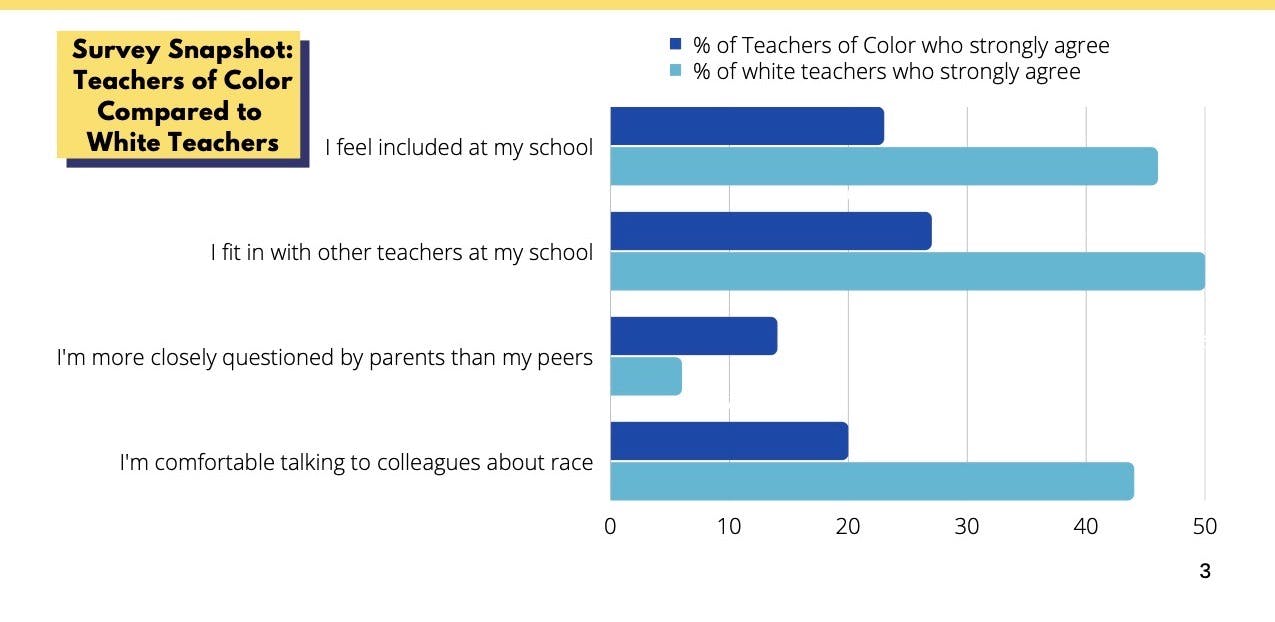The need for a more diverse teaching workforce in California is evident. While students of color make up nearly 80 percent of the state’s student population, just under 40 percent of California teachers are people of color. Research shows teacher diversity benefits all students regardless of race or ethnicity, and although California is engaged in efforts to recruit more teachers of color, data shows that teachers of color are leaving the profession at higher rates than white teachers.
Jason Kim-Seda, a recent doctoral graduate of the Educational Leadership Program (ELP) at UCLA, now working at the College of Education at CSU Los Angeles, contends that a sense of belonging among teachers of color, or rather the lack of one, may be a part of the problem.
“Teachers of color feel less belonging than their white colleagues in terms of their voices being valued or having input on school policies and procedures. They feel like tokens sometimes, and face more pressure to prove themselves,” Kim-Seda says. “There seems to be a weariness and a tiredness that I think leads to kind of expedited burnout.”
Kim-Seda makes his case about the impact and importance of a sense of belonging among teachers of color in the recently published UCLA ELP Dissertation Brief, “Independent School Teachers of Color Face More Barriers to Belonging Than Their White Colleagues.”

“My interest was to look at the retention of teachers of color, and how is that impacted by a sense of belonging, as well as at efforts to promote belonging, either institutionally or from school leadership.” Kim-Seda said.
To explore the sense of belonging among teachers of color, Kim-Seda surveyed 133 white teachers and teachers of color who were working in predominately white independent schools in Los Angeles. The teachers were surveyed about their sense of belonging, their professional treatment, and the level of leadership and institutional support they experience. Teachers of color were also asked about their racial sense of belonging and experiences of discrimination. Kim-Seda then conducted follow-up interviews with 21 of those teachers. While the study only included independent school teachers, and its findings are specific to those institutions, the implications may be generalizable to other K–12 schools.
Kim-Seda says the study highlights significant data on the experiences of teachers of color working in predominantly white spaces, and their lesser sense of belonging than their white colleagues in a handful of key areas.
· Teachers of color felt less of a sense of belonging in terms of their voices being valued or having input on school policies and procedures, sometimes even during faculty meetings.
· They were more likely to experience feelings of tokenization, citing examples of being used for PR efforts, such as photographs on school websites and certain admissions processes.
· Sometimes they felt they were asked to engage in labor that they were not compensated for because they are teachers of color, such as “Okay, you’re the Black teacher, you work with the Black students and families we have here and help them feel more comfortable.”
· Teachers of color also felt more judgment and pressure to prove themselves.
“There is a lot of pressure, either explicitly or implicitly, from parents and the community, questioning teachers’ expertise,” Kim-Seda says. ”They feel like they are treated with a little bit less respect, a little less courtesy than their white peers.”
Teachers of color also expressed mixed levels of concern about their experiences with and support from school leadership regarding racial awareness, conversations and policies about race and racism, commitment to supportive relationships, and interventions with parents.

“This element of belonging matters for teachers,” Kim-Seda says. “And having school leaders who understood that and who might step in and defend teachers a little bit more if they’re getting unnecessary or uncalled for pushback from parents was really important to them.”
While it’s not included in his objective research findings, Kim-Seda says he thinks that if schools recruit a diverse population of educators, “they have a moral and ethical responsibility,” to make considerations that address belonging, cultural impact, and some of the institutional practices that may stand as barriers to belonging.
“Those with the power at schools to do the hiring and firing, those leaders who are brought in to lead diversity, equity, and inclusion efforts, those are the folks who need to understand and make sure that belonging is at the forefront of their strategy for recruitment, hiring, retention, and development of a teaching body that reflects society around them,” Kim-Seda says.
“Your efforts to further diversity, equity, and inclusion may amount to nothing if you’re not doing some long-term planning and thinking about school and institutional culture, and developing a sense of belonging. If you want to retain really good talent, there needs to be an extra commitment.”
Kim-Seda hopes his dissertation brief will serve as a resource for school leaders at predominately white independent schools to help them further experiences of belonging and increase leadership and support of teachers of color in those institutions. The brief offers recommendations that, among other suggestions, focus on the growth of diversity, equity, and inclusion efforts, set clear boundaries for behavior and communications, and encourage school leaders to proactively build relationships with teachers of color.
“Relationship building is key for school leaders, and they need to go that extra mile in building relationships with teachers of color in order to build trust and autonomy in those relationships,” Kim-Seda explained.
“Listen to the value, take the input of all your teachers, your parents, your students of color. Really take the time to regularly build relationships and do some listening sessions so that you are staying abreast of what’s happening within your school site or your district. As opposed to making assumptions or just putting out fires, you need to proactively build relationships to develop belonging.”
“Independent School Teachers of Color Face More Barriers to Belonging Than Their White Colleagues” is part of a series of dissertation briefs published by the UCLA Educational Leadership Program. The full brief, including key findings and recommendations, is available here.
